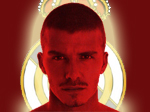Last June 18, an earthquake shook the world of football. Real Madrid, considered the best team in history, signed up David Beckham, the icon of sports marketing who, until then, had fought for Manchester United, the British team. But, beyond its impact on the world of football – called ‘soccer’ in the U.S. - this move is part of a deliberate management strategy aimed at transforming football into the Olympus of imagery and advertising. The moral is clear: It is no longer enough to score goals; you also have to sell jerseys.

Sign up to stay informed about our latest article releases.